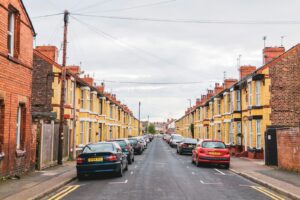What does good growth look like?
![]()
![]()
 We’re constantly hearing that ‘growth is good’ but we don’t hear so much about ‘good growth’. The kind of growth that expands the potential of people – all people – and helps places to flourish. That works within the limits of the planet and our natural resources. That expands from the bottom up rather than waiting for the trickle-down.
We’re constantly hearing that ‘growth is good’ but we don’t hear so much about ‘good growth’. The kind of growth that expands the potential of people – all people – and helps places to flourish. That works within the limits of the planet and our natural resources. That expands from the bottom up rather than waiting for the trickle-down.
As our politicians celebrate a return to GDP growth, this May edition of New Start puts forward some ideas for how economic growth can more fully serve people and places.
We start by asking if growth can be more inclusive. Economic orthodoxy would have us wait for growth to trickle down; our experience over the last thirty years has shown that our poorest communities need more than crumbs, as those at the top get ever richer. Instead, as this month’s long-form article shows, growth strategies need to be aligned more closely with poverty reduction so that those people and places in most need benefit directly, and the way we measure – and what we measure – needs to change.
Two ideas for how this can work at a local level are being tried out, in Leeds city region and in Birmingham.
In Leeds, a collaboration with the Joseph Rowntree Foundation is attempting to broaden the discourse around local growth, to ensure that all of its citizens benefit from a return to GDP growth in the region.
In our Q & A with the Bishop of Birmingham he calls for a joined-up approach to poverty, in which everyone in a city – from businesses to individuals – takes responsibility.
‘People are deeply sceptical of growth figures that don’t turn into change at the bottom. That’s why we need mutual responsibility and redistribution,’ he says.
Secondly, we look at what growth that starts with people looks like. In Detroit, a city ravaged by consumer growth followed by subsequent decline, the people left behind are taking matters into their own hands. They are forging a new economy, one led by citizens and their love of place, and it’s a wonder to behold.
In Manchester and in many other cities, a civil economy is emerging, one which focuses on reciprocity and solidarity rather than GDP and GVA. What do these movements tell us about the limits of traditional growth strategies?
And thirdly, we consider a post-growth world in which the ecological, the social – and the economic – flourish. Andre Reichel argues that replacing fossil fuel consumption with green goods will not be enough; rather we need to move to a ‘steady state’ economy in which people work less and share more.
It’s a vision of a flourishing society that has moved beyond the growth imperative to promote every kind of wealth in cities and communities – cultural and human as well as social and economic.
So let’s celebrate the rise in GDP by using it as an opportunity to reflect on how and whom it serves, and to consider the kind of growth we need for a truly flourishing society.
















Hi Clare
Increasingly I regard GDP as a measure of an economy’s unsustainable activity.
Our community is developing its own measurement systems using the same methodology in order that we can compare relative performance of the ‘old economy’ and the ‘new economy’.
Good that you’ve raised the topic. There’s lots going on in this field – particularly in the circular economy with WRAP and BSI.
Mike 🙂
Hi Mike, Thanks for your comment. If you’d like to write a piece for us about your new measurement systems that would be great.